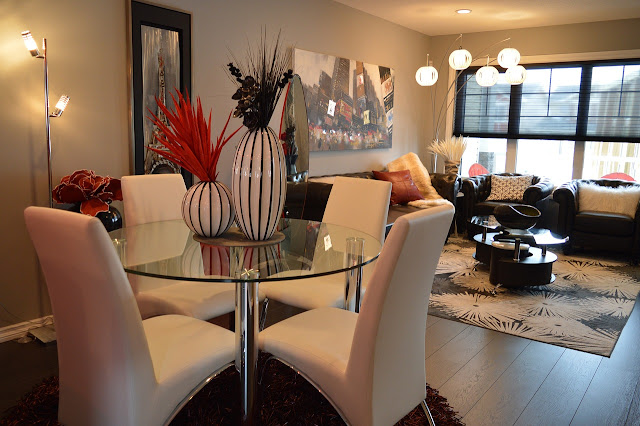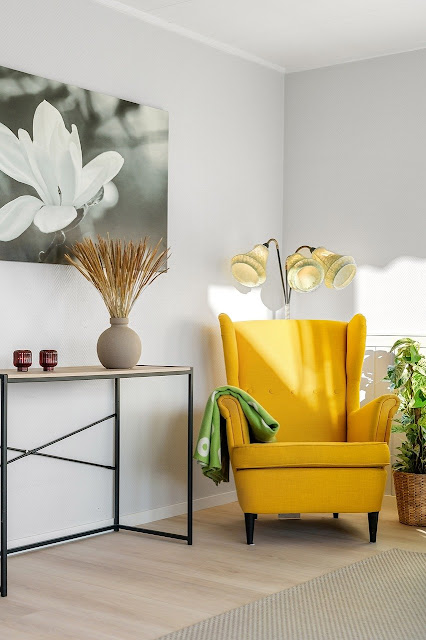Modern Interior Design Trends: A Contemporary Guide.
Embrace Minimalism
Minimalism continues to be a dominant trend in modern interior design. This style emphasizes simplicity, clean lines, and a clutter-free environment. The key to achieving a minimalist look is to focus on quality over quantity. Invest in a few statement pieces of furniture and decor that serve both functional and aesthetic purposes. Opt for neutral color palettes, such as whites, grays, and beiges, to create a serene and harmonious atmosphere.
Sustainable and Eco-Friendly Materials
Sustainability is no longer a niche consideration; it's a major trend influencing modern interior design. Consumers are increasingly opting for eco-friendly materials that minimize environmental impact. Recycled wood, bamboo, and reclaimed metal are popular choices for furniture and decor. Additionally, natural fibers like cotton, wool, and jute are being used in textiles to create a warm and organic feel in living spaces.
Bold Accent Walls
While neutral tones dominate the minimalist aesthetic, bold accent walls are making a comeback. Adding a vibrant color or a striking wallpaper to one wall can instantly transform a room and create a focal point. Popular colors for accent walls include deep blues, rich greens, and warm terracottas. Geometric patterns and botanical prints are also trending choices for wallpaper, adding a touch of personality and creativity to your space.
Multifunctional Spaces
As more people work from home and engage in remote activities, the need for multifunctional spaces has become paramount. Modern interior design now focuses on creating versatile areas that can serve multiple purposes. Consider integrating furniture that can easily be reconfigured or has built-in storage to maximize space efficiency. For example, a desk that doubles as a dining table or a sofa with hidden compartments can make a significant difference in a smaller home.
Smart Home Integration
The rise of smart home technology is revolutionizing modern interior design. Integrating smart devices into your living space not only enhances convenience but also adds a futuristic touch. Smart lighting systems, thermostats, and voice-activated assistants are becoming standard features in contemporary homes. These technologies allow you to control your environment with ease, creating a seamless and connected living experience.
Biophilic Design
Biophilic design is a trend that emphasizes the connection between humans and nature. This approach incorporates natural elements into interior spaces to promote well-being and reduce stress. Large windows that allow natural light to flood in, indoor plants, and natural materials like wood and stone are key components of biophilic design. Water features, such as indoor fountains or aquariums, can also enhance the sense of tranquility and harmony in your home.
Maximalism
Contrary to minimalism, maximalism celebrates boldness, color, and an eclectic mix of styles. This trend encourages the use of vibrant hues, diverse textures, and a variety of patterns. To achieve a maximalist look, mix and match different styles and eras, creating a visually stimulating and dynamic environment. Don't be afraid to showcase your personality and interests through unique decor pieces, artwork, and collectibles.
Vintage and Retro Revival
Vintage and retro styles are making a significant comeback in modern interior design. Incorporating elements from the past adds character and nostalgia to contemporary spaces. Mid-century modern furniture, with its clean lines and organic shapes, is particularly popular. Vintage lighting fixtures, retro wallpaper, and antique decor items can be used to create a sense of history and charm in your home.
Open Concept Living
Open concept living continues to be a favored design choice for modern homes. This layout removes barriers between the kitchen, dining, and living areas, creating a spacious and cohesive environment. Open floor plans promote social interaction and make entertaining guests easier. To maintain a sense of separation between different functional areas, use rugs, furniture placement, and lighting to define distinct zones within the open space.
Artistic Expression
Incorporating art into interior design is a timeless trend that never goes out of style. Modern interiors often feature large-scale artworks, sculptures, and installations as focal points. Art adds depth and personality to a space, reflecting the homeowner's tastes and passions. Consider investing in original pieces or creating a gallery wall to showcase a collection of smaller artworks.
Personalized Spaces
Lastly, personalization is a key trend in modern interior design. Homes are becoming more reflective of individual personalities and lifestyles. Custom-made furniture, bespoke decor, and unique design elements are being used to create spaces that are truly one-of-a-kind. Personalization allows you to infuse your home with your unique style, making it a true reflection of who you are.
For more information and inspiration on modern interior design trends, visit Interior Design Today.




















Comments
Post a Comment